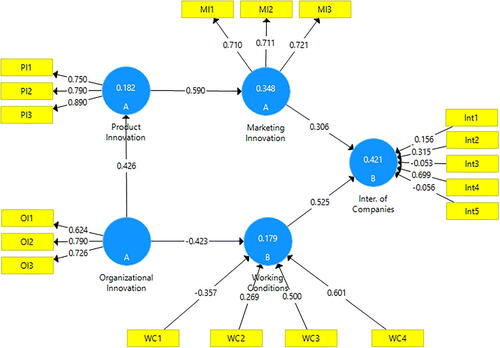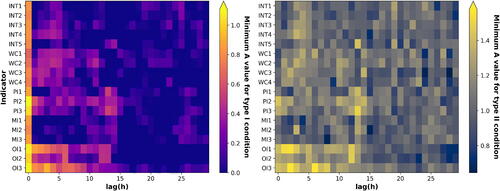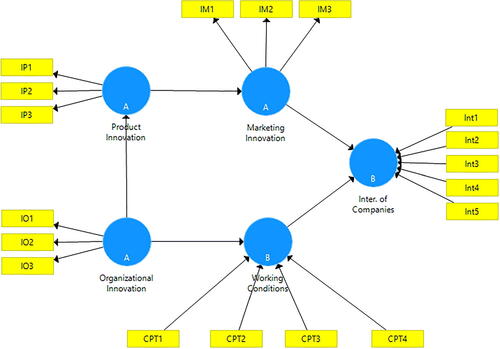Figures & data
Table 1. Distribution of participating companies by sector of activity.
Table 2. Results obtained with the application of the CTA-PLS algorithm.
Figure 2. Estimated model obtained with PLSc (outer loadings, path coefficients and coefficients of determination).

Table 3. Outer loadings: mean, StDev, t-values and p-values.
Table 4. Internal consistence reliability: ρA, bias, 95% bootstrap BCa CI and p-values.
Table 5. Convergent validity: Average Variance Extracted (AVE), Bias, 95% bootstrap BCa CI and p-values.
Table 6. Discriminant validity: Heterotrait-Monotrait ratio (HTMT), bias, 95% bootstrap BCa CI.
Table 7. Collinearity analysis in outer model: Variance Inflation Factor (VIF).
Table 8. Outer weights: mean, StDev, t-values and p-values.
Table 9. Fit summary of the saturated and estimated models.
Table 10. Collinearity analysis in inner model: Variance Inflation Factor (VIF).
Table 11. Variance explained: Coefficient of determination (R), Bias, 95% bootstrap BCa CI and p-values.
Table 12. Predictive relevance Q
Table 13. Predictive performance of the PLS model vs. benchmark LM, considering the full dataset.
Table 14. Path coefficients with the 95% bootstrap BCa CI and p-values.
Table 15. Predictive relevance Q
Figure 3. The minimum A value for which each of the Indicators violates conditions (2) in left panel and condition (3) in right panel. Unbounded intervals beginning in each of these minimum values for A at given lag h (x-axis) which violate positive definiteness of each Indicator (y-axis) autocovariance.


